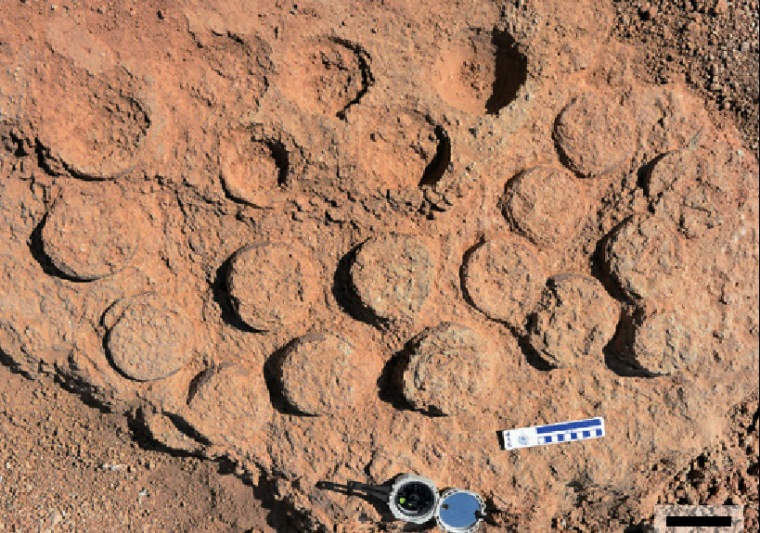Imagine visiting a colony of nesting seagulls on an exposed sandbar. Their nests are roughly equally spaced, out of pecking range. As well as incubating individuals on their nests the air is full of screaming birds swooping towards you, and even pecking or buffeting your head. Only a relative few bird species nest in colonies. Some bury their eggs communally in warm sand or compost abandoning them for solar energy to hatch. The last approach is also that of many reptiles, notably turtles and crocodiles, but some crocodiles do behave like gulls, females guarding their buried clutches, so why not dinosaurs? Brooding in colonies has been suspected of dinosaurs, although most fossil eggs had been buried.
Upper Cretaceous sedimentary rocks in Mongolia have yielded more dinosaur eggs than most other places, especially in the northern Gobi Desert’s largely unvegetated outcrops. It is from there that exquisitely preserved, firm evidence has emerged of dinosaurs nesting communally (Kanaka, K. and 9 others 2019. Exceptional preservation of a Late Cretaceous dinosaur nesting site from Mongolia reveals colonial nesting behavior in a non-avian theropod. Geology, v. 47, p. 1-5; DOI: 10 .1130 /G46328.1). The site exposes 15 clutches about 1.5 m apart that, together, contain more than 50 spherical eggs 10 to 15 cm in diameter. Modern erosion has dissected the occurrences, and it is estimated that up to 32 clutches may have been laid in an area of ~286 m2. That the eggs had been laid on the surface, covered – possibly with organic matter – and then incubated is clearly evidenced by all of them resting in pockets on an erosion surface covered by the same thin, continuous layer of bright red sand. About 60% of them seem to have hatched successfully. Each eggshell contains the same doubled-layered infill of fine sediment made of surrounding sediment and broken shell fragments.

The detail of the nests suggests that they were created on an exposed surface during a single dry season and after hatching, when their infills formed, they were gently flooded as stream levels rose to deposit the thin, red covering layer. Whether or not the eggs were brooded or merely protected cannot be assessed, despite the excellence of preservation. But the high hatching success suggests that adults fended off predators during incubation. Egg shape and size point to their having been laid by a single species of theropod dinosaur; probably not ancestral to birds, but a group that includes velociraptors and tyrannosaurs. Yet nest-tending has clear parallels among later birds.


In 1997 I visited similar nests in Yunxian County, Hubei Province, China at what is now a protected geological site. No skeletons had been found then, but they have turned up since and one is on display in Hubei Provincial Museum in Wuhan City, Hubei. The nests are in terrestrial sandstones that filled a former valley in Proterozoic rocks and seem to have been flooded in a similar way to the Mongolian examples.
LikeLike
Thanks Roger! Steve
LikeLike